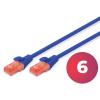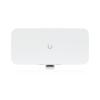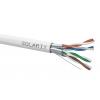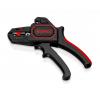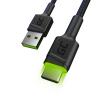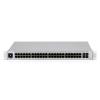-
$
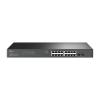
The TP-Link SG2218P is a Smart JetStream series switch equipped with 16 gigabit Ethernet ports (10/100/1000 Mbps) and 2 SFP slots. All Ethernet ports feature PoE+ (802.3 af/at) power output, with a maximum power output per port of 15.4 W using 802.3 af or 30 W using 802.3 at. The total power budget for the entire device is 150 W. The switch supports Layer 2 management features and basic Layer 3 functions. It includes features such as QoS, link aggregation, spanning tree protocols, multicasting (IGMP / MLD Snooping), access control, and VLANs. Additionally, the device is compatible with the Omada system, allowing centralized management. The switch features active cooling and is designed for mounting in a 19" rack cabinet.
16 gigabit Ethernet pots, 2 SFP slots, 16 PoE+ outputs
The switch is equipped with 16 gigabit Ethernet ports (10/100/1000 Mbps) and 2 SFP slots (1 Gbps). Each Ethernet port features PoE+ (802.3 af/at) power output, with a maximum power output per port of 15.4 W using 802.3 af or 30 W using 802.3 at. The total power budget is 150 W. The PoE+ standard is widely used in telecommunications, including IP cameras, VoIP phones, and access points. The use of SFP slots allows for connection using fiber optic cables, which provide a much greater range than Ethernet cables.

Multiple uses
The device is ideal for use in large networks as an access switch to which you can connect end devices. The SFP slot allows you to bring the signal from the main/aggregation switch, and you can use the second slot to transmit the signal to the next access switch. Thanks to the PoE+ standard, it can support most devices using PoE power. The SG2218P has rich management features and can easily function as the main/sole switch in a smaller network (e.g., a restaurant).

Access control
You can utilize Access Control Lists (ACLs), with a maximum of 230 entries.


QoS function
It allows for bandwidth control, enabling the creation of up to 8 priority queues. This assigns priority to the most important actions taken by users, thereby enhancing the overall quality of transmission.
VLAN support
The switch allows for the segmentation of VLANs to simplify management of device groups and enhance network security.

Omada SDN
The SDN platform serves to integrate all compatible devices and provides centralized management from the cloud. You can create a very large network that you'll manage from a single interface. The key advantage of Omada SDN is its high scalability. Expanding the network with additional segments or interfaces is straightforward and doesn't involve significant downtime.
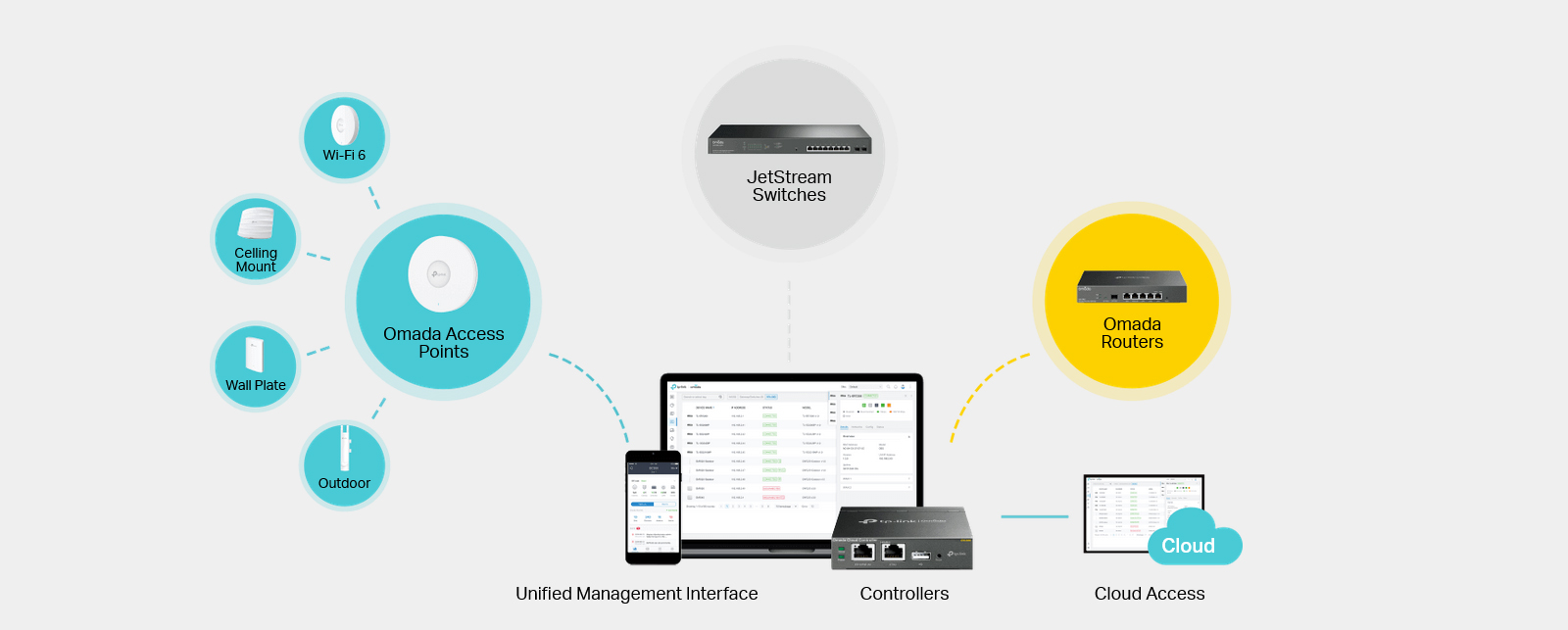
Omada application
You can use the Omada mobile application available for Android and iOS devices for management and configuration. The initial setup consists of a few simple steps, which the application will guide you through quickly. You can manage the SG2218P in both standalone mode and controller mode.

Specifications
| TP-Link SG2218P | |
| Hardware features | |
|---|---|
| Standards and Protocols | IEEE 802.3i, IEEE 802.3u, IEEE 802.3ab, IEEE802.3z, IEEE 802.3ad, IEEE 802.3x, IEEE 802.3az, IEEE 802.1d, IEEE 802.1s, IEEE 802.1w, IEEE 802.1q, IEEE 802.1p, IEEE 802.1x |
| Interface | 16× 10/100/1000 Mbps RJ45 Ports (Auto Negotiation/Auto MDI/MDIX) 2× Gigabit SFP Slots |
| Network Media | 10BASE-T: UTP category 3, 4, 5 cable (maximum 100m) 100BASE-TX/1000Base-T: UTP category 5, 5e or above cable (maximum 100m) 1000BASE-X: MMF, SMF |
| Cooling | Active, 1 fan |
| Power Supply | 100-240V AC, 50/60Hz |
| PoE Ports (RJ45) | Standard: 802.3at/af compliant PoE+ Ports: 16 Ports PoE Power Budget: 150 W |
| Dimensions (W x D x H) | 440 × 180 × 44 mm (17,3 × 7,1 × 1,7 cali) |
| Mounting | Rack Mountable |
| Max Power Consumption | 181.4 W (110 V/60 Hz) (with 150 W PD connected) 178.3 W (220 V/50 Hz) (with 150 W PD connected) |
| Max Heat Dissipation | 619.06 BTU/hr (110 V/60 Hz) (with 150 W PD connected) 608.52 BTU/hr (220 V/50 Hz) (with 150 W PD connected) |
| Performance | |
| Switching Capacity | 36 Gb/s |
| Packet Forwarding Rate | 26,78 Mpps |
| MAC Address Table | 8K |
| Packet Buffer Memory | 4,1 Mbit |
| Jumbo Frame | 9 KB |
| Software features | |
| Quality of Service | 802.1p CoS/DSCP priority 8 priority queues Priority Schedule Mode
Bandwidth Control
Storm Control
|
| L2 and L2+ Features | 32 IP Interfaces
DHCP Relay
Static ARP Proxy ARP Gratuitous ARP Link Aggregation
Flow Control
802.1ab LLDP/ LLDP-MED |
| Advanced Features | Automatic Device Discovery Batch Configuration Batch Firmware Upgrading Intelligent Network Monitoring Abnormal Event Warnings Unified Configuration Reboot Schedule |
| VLAN | VLAN Group
MAC VLAN: 12 Entries Protocol VLAN GVRP Voice VLAN |
| Access Control List | Support up to 230 entries Time-Range
MAC ACL
Combined ACL Rule Operation
|
| Security | AAA 802.1X
Static/Dynamic/Permanent Port Security
Secure web management through HTTPS with SSLv3/TLS 1.2 Secure Command Line Interface (CLI) management with SSHv1/SSHv2 IP/Port/MAC based access control |
| IPv6 | IPv6 Static Routing and ACL IPv6 Dual IPv4/IPv6 IPv6 Interface Multicast Listener Discovery (MLD) Snooping IPv6 neighbor discovery (ND) Path maximum transmission unit (MTU) discovery Internet Control Message Protocol (ICMP) version 6 TCPv6/UDPv6 IPv6 applications
|
| MIBs | MIB II (RFC1213) Bridge MIB (RFC1493) P/Q-Bridge MIB (RFC2674) Radius Accounting Client MIB (RFC2620) Radius Authentication Client MIB (RFC2618) Remote Ping, Traceroute MIB (RFC2925) Support TP-Link private MIBs RMON MIB(RFC1757, rmon 1,2,3,9) |
| Management | |
| Omada App | Yes, through
|
| Centralized Management | Omada Cloud-Based Controller Omada Hardware Controller OC300 Omada Hardware Controller OC200 Omada Software Controller |
| Cloud Access | Yes, through
|
| Zero-Touch Provisioning | Yes. Requiring the use of Omada Cloud-Based Controller |
| Management Features | Web-based GUI Command Line Interface (CLI) through telnet SNMPv1/v2c/v3 SNMP Trap/Inform RMON (1,2,3,9 groups) SDM Template DHCP/BOOTP Client Dual Image, Dual Configuration CPU Monitoring Cable Diagnostics EEE SNTP System Log |
| Others | |
| Package Contents |
SG2218P Power Cord Installation Guide Rackmount Kit Rubber Feet |
| System Requirements | Microsoft® Windows® XP, Vista™ or Windows 7/8/10/11, MAC® OS, NetWare®, UNIX® or Linux. |
| Operating Temperature | 0–50 ℃ (32–122 ℉); |
| Storage Temperature | -40–70 ℃ (-40–158 ℉) |
| Operating Humidity | 10–90% RH non-condensing |
| Storage Humidity | 5–90% RH non-condensing |






 Polski
Polski English
English Italiano
Italiano Español
Español Čeština
Čeština Српски
Српски Deutsch
Deutsch Ελληνικά
Ελληνικά Slovenský
Slovenský

